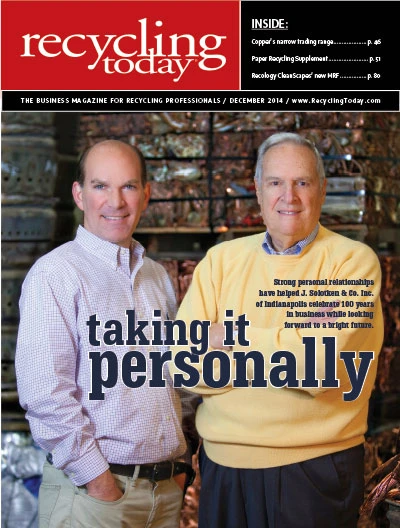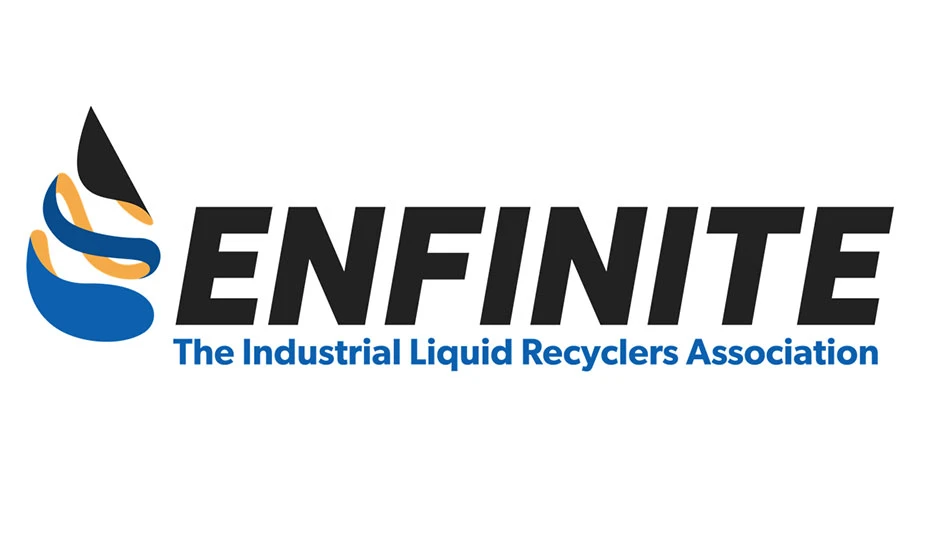 Traders in secondary commodities have benefitted from (or at times coped with) intense demand from China for raw materials since the late 1990s. The resulting boosts in pricing and production of basic materials have been dubbed by some as a commodities “super cycle.”
Traders in secondary commodities have benefitted from (or at times coped with) intense demand from China for raw materials since the late 1990s. The resulting boosts in pricing and production of basic materials have been dubbed by some as a commodities “super cycle.”
Throughout 2014, China’s gross domestic product (GDP)—at least according to its government’s statistics—has continued to grow, though at a slower pace than in most previous years.
What seems apparent to processors and traders in Europe, North America and other regions that trade with China is that its intense demand for scrap materials has peaked and in some cases receded. A cooler overall economy in China, its ability to generate more scrap within its own borders and a shift away from an economy dominated by manufacturing and infrastructure building are the likely culprits.
In 2014, traders and processors of scrap metal, paper and plastic in North America, India and parts of Europe experienced a healthier economy close to home, helping to negate some of the negative effects from China’s economy returning to Earth.
Nonetheless, prices for nonferrous metals, ferrous scrap and some grades of recovered fiber have been on a downward trend throughout 2014, something that has long been predicted to coincide with the stabilization of China’s demand for raw materials.
Mostly flat
Ferrous scrap processors and traders experienced only occasional price volatility in the first three quarters of 2014. In the United States, February featured a $35-per-ton drop for some grades, and, more recently, October trading signaled price declines of approximately $15 per ton in the U.S.
During the other months, pricing seldom rose or dropped by $10 or more, though a series of minor price movements has been pointing to a downward drift.
Ocean shippers ask for more In a move that affected the cost of scrap shipments from North America to Asia, member carriers in the Transpacific Stabilization Agreement (TSA) Westbound section recommended guideline minimum rates of $300 per 40-foot container (FEU) from Los Angeles/Long Beach and $750 per FEU for all-water U.S. East Coast and Gulf Coast shipments of recovered fiber, scrap metal, plastic scrap and hay to ports in China. The new minimum rates were scheduled to take effect Nov. 1, 2014. The TSA says the rate hike is needed in light of freight rates that have dropped below break-even levels amid weakening demand and rising costs. In calling for the hike, the TSA Westbound says what it calls low-value, low-margin cargoes, such as recyclables and hay, account for up to 40 percent of the entire market and are moving at rates that do not cover the variable transport costs. TSA Westbound adds that the specified minimums still do not restore rates to sustainable levels for the commodities and port routes in question and says it expects that these, along with rates for other origins and other destinations, will need to be higher. The group indicates that further increases are likely in December 2014 and in early 2015. “Many base cargo rates in the Westbound trans-Pacific market are approaching levels that do not justify carriage, especially when you take into account offsetting destination costs, such as equipment cleaning and repair and local delivery,” says Brian Conrad, TSA Westbound executive administrator. “That’s bad news for shippers [and] carriers for which recyclables and hay represent a large share of the market. We need to bring those rates up, and we believe the market can support the higher minimums,” he adds. Members of the TSA include APL Ltd., K Line, China Shipping Container Lines, Maersk Line, CMA-CGM, Mediterranean Shipping Co., COSCO Container Lines, N.Y.K. Line, Evergreen Line, OOCL, Hanjin Shipping Co. Ltd., Yangming Marine Transport Corp., Hapag-Lloyd AG, Zim Integrated Shipping Services and Hyundai Merchant Marine Co. |
According to transaction figures collected by American Metal Market (AMM), pricing for prompt scrap (No. 1 busheling) started the year in January at nearly $445 per ton. After the sharp February drop to $409, the prompt grade traded in the $390 to $400 range from March through September before it fell in October to $385 per ton.
Processors and brokers who specialize in export shipping are hopeful that recent increases in Turkish ferrous scrap buying are reversing a 2013 trend in the ferrous sector: a decrease in transoceanic trading. (More on this topic can be found in the article “Closer to Home” in the July-August 2014 issue of Recycling Today Global Edition, available at www.RecyclingToday.com/rtge0714-ferrous-trading-market-report.aspx.)
“After a reduction of 12 percent in 2013, the world’s foremost steel scrap importer, Turkey, increased its overseas steel scrap purchases by 4.9 percent to 9.73 million [metric tons] in the first half of 2014,” writes Rolf Willeke, statistics advisor to the Brussels-based Bureau of International Recycling (BIR) Ferrous Division in its latest World Mirror newsletter. “Also in positive territory were the steel scrap imports of Taiwan (+1 percent to 2.2 million [metric tons]),” he adds.
A bearish attitude
Few commodities have been boosted in value by China’s industrialization and urbanization more than copper and a handful of other nonferrous metals.
If the rise of China’s industrial output has been the key reason driving the nonferrous price surge, then the leveling off of this phenomenon likely has played a role in the downward direction of metals pricing in 2014.
For an article about hedging titled “Reducing Your Exposure” in the November 2014 edition of Recycling Today (online at www.RecyclingToday.com/article/rt1114-metals-trading-hedging/), William Adams of London-based FastMarkets Ltd. provides a chart of how six nonferrous metals have performed on the London Metal Exchange (LME) throughout 2014.
Adams’ chart indicates that copper ended 2013 at $7,374 per metric ton and sunk to $6,735 by late September 2014—a decline in value of 9.7 percent. The LME price of nickel, meanwhile, dropped by 19.7 percent in the same time frame, while aluminum declined by 7.4 percent.
Although it has flattened somewhat, by no means has China’s economy ground to a halt, and the nation’s mills, smelters and refineries continue to consume large volumes of primary and secondary raw materials.
However, on the primary side, mining, ore processing and metals production companies have had nearly two decades to respond to China’s new, larger appetite. This has helped to reduce the real and perceived scarcity that had attracted investors in copper and other metals.
Contributors to the most recent nonferrous version of BIR’s World Mirror characterized scrap generation for 2014 differently depending on their locations.
Reporting from the Middle East, Ibrahim Aboura of Jordan’s Aboura Metals writes, “Copper supply and demand have been steady” as of late summer and early fall 2014.
“Copper scrap remained in good, steady supply during the summer, with most consumers buying all that they needed to feed their furnaces,” writes Robert Stein of St. Louis-based Alter Trading, reporting on the United States.
Both Marc Natan of Manco in France and Ralf Schmitz of the VDM (Association of German Metal Traders) in Germany report that a traditionally slow summer was followed by an uptick in activity in September 2014. “September has begun with better volumes and higher price levels alongside an LME moving upwards and the euro moving lower again,” Natan writes in the World Mirror.
Worlds of opportunity
The state of the industry in two nonmetallic sectors was the topic of conversation at the Paper & Plastics Recycling Conference, which the Recycling Today Media Group hosted in early October in Chicago.
The conference featured sessions focusing on the supply, demand and quality of recovered fiber and plastic scrap.
Hampering growth Officers of the Brussels-based Bureau of International Recycling (BIR) said market conditions continue to challenge European recyclers, particularly on the ferrous side, leading to likely market contractions. The comments were made during an informal press conference during the BIR Autumn Round-Table sessions in Paris, Oct. 27-28, 2014. BIR President Bjorn Grufman told attendees that Western Europe’s slowing manufacturing industry continues to hamper its recyclers. “We have the same capacity that we had in the summer of 2008, but we have only 60 or 70 percent of the material to treat,” he observed. “Everyone is fighting for the little material that is around.” Grufman also described rising scrap prices amid stagnating sales prices, leading to thinner margins. As a result, he said, it was likely Western Europe’s recycling industry would see a reduction in capacity. He referred to an excess of finished steel products from Chinese steel mills overflowing into European markets as another challenge. “The financial situation for steel scrap traders and processors in Western Europe is poor, and that goes a bit for the whole world as well,” Grufman said. He said conditions were better in the nonferrous sector, possibly because of the influence of the London Metal Exchange on pricing for most nonferrous grades. BIR Director General Alexandre Delacoux said the association is promoting the development of a more global circular economy. “We see many instances in developed countries, notably, that look at circular economies as a way to restrict trading to a certain region or even nation,” Delacoux observed. Such a view is not appropriate, he said, “because of the fact that you need trading in these materials on an international basis and based on price, rather than on decisions to support various parts of the value chain.” |
Quality often dominated the conversation regarding recovered fiber, with both mill buyers and plant operators offering viewpoints on recovered fiber quality as of late 2014.
The dwindling supply of the No. 8 old newspapers (ONP) grade of high enough caliber to meet quality standards was one of the key points brought up during the “Mill Buyers Panel” at the conference.
Along with the decline in the supply of deinked news, other points brought out during the session were the soaring levels of contaminants and outthrows found in many bales, the changing roles that MRFs (material recovery facilities) are playing in the paper industry and how transportation issues also are becoming a greater concern for recyclers.
The dominance of OCC (old corrugated containers) as America’s high-volume recovered fiber grade was part of the conversation at the session hosted by the Paper Stock Industries (PSI) chapter of the Institute of Scrap Recycling Industries Inc. (ISRI), which focused on specifications. Myles Cohen of the U.S. division of Australia’s Pratt Industries noted that 66 percent of the 49.3 million tons of recovered fiber collected in the U.S. in 2013 consisted of OCC.
Yet, Cohen added, the PSI specification for No. 11 OCC is exceedingly brief and decades old. “We have 15 words for this huge percentage of what we sell,” he said. “We’ve had this specification for more than 25 years,” he said, adding “it’s time to get clarity and formality” introduced to the grade.
The conversation about No. 11 OCC and other recovered fiber specifications will continue at the PSI Specifications Summit 2015, Feb. 25-26, in Dallas.
Opportunity was often the watchword for plastic scrap. Although environmental groups sometimes characterize plastics as a problem—pointing to pollution in the world’s oceans as one example and lobbying for banning single-use plastic bags as another—the material is usually capable of being recycled.
“The Outlook on Plastics” session at the conference included speakers who saw plastics’ potential. Ron Sherga of U.S.-based EcoStrate SFS commented, however, that the biggest challenge in plastics recycling often is end market demand.
“Plastics have struggled with that,” he acknowledged.
Part of the problem, Sherga said, is that plastics producers often have left the work of recycling to other sectors. “Metal and paper [collectors and producers] control more plastics than the plastics industry,” he said.
Further hampering plastic recycling is a lack of collaboration, Sherga added.
Despite these barriers he expressed optimism, saying, “Plastic is and will be the material of the future.”
Jim Glauser, associate director of U.S.-based research firm IHS, reviewed plastics recycling rates around the world, noting that the PET (polyethylene terephthalate) recycling rate in North America was 19.9 percent. Central and South America lead the world, achieving a 39.7 percent recycling rate for this material, Glauser added.
In the wider polymers market, “The niche will remain for recycled plastics,” Glauser said. “Their end use is limitless.”
Such a sentiment should provide encouragement to plastics recyclers around the world.
The author is editor of Recycling Today and can be contacted at btaylor@gie.net. A version of this article appeared in the November/December issue of Recycling Today Global Edition, a sister publication.

Explore the December 2014 Issue
Check out more from this issue and find your next story to read.
Latest from Recycling Today
- Greenville, Mississippi, launches aluminum can recycling program
- Cotton Lives On kicks off 2025 recycling activities
- Georgia-Pacific names president of corrugated business
- Sev.en Global Investments completes acquisitions of Celsa Steel UK, Celsa Nordic
- Wisconsin Aluminum Foundry is a finalist for US manufacturing leadership award
- MetalX announces leadership appointments
- Sofidel agrees to purchase Royal Paper assets
- US Plastics Pact report charts expansion path for recycled content in packaging






